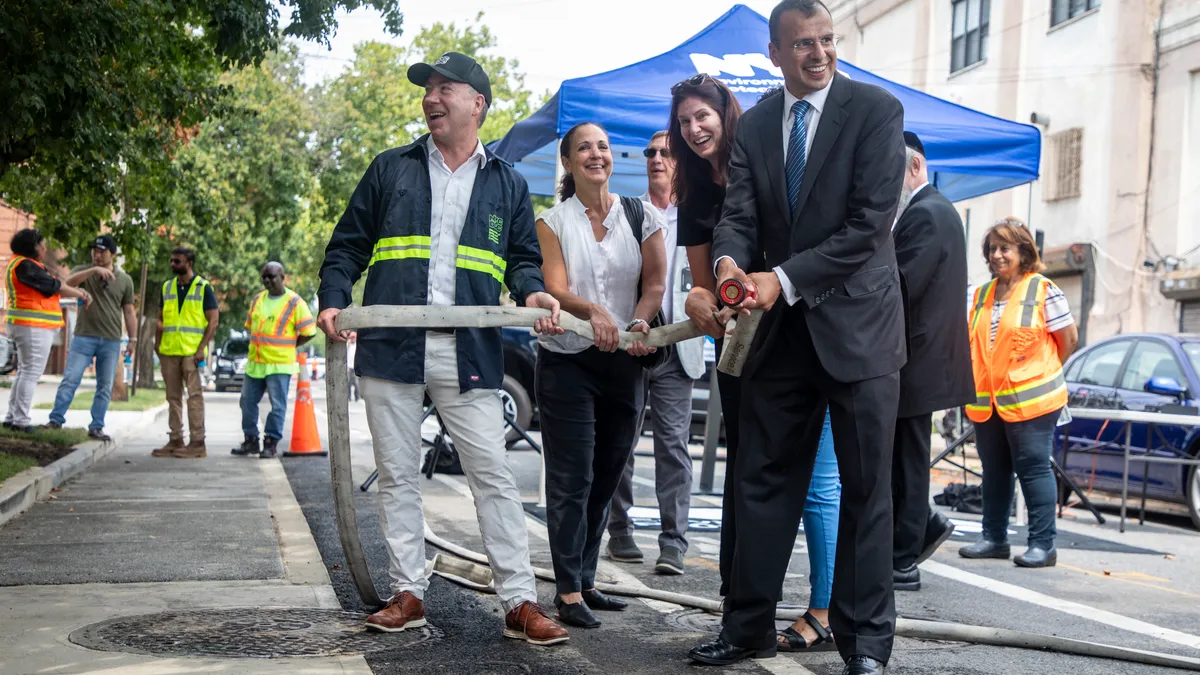Dive Brief:
- New York City hopes to ease flooding with its first large-scale implementation of porous pavement, allowing stormwater to drain into the ground rather than overwhelm the city’s sewer system.
- Seven miles of road in Brooklyn will be outfitted with the porous pavement, according to a Monday news release from the city. The more than $32 million project is slated to be completed in a little over a year.
- The move is part of New York City’s push to build out green infrastructure, which filters and absorbs stormwater where it falls. The city plans to expand porous pavement to communities across Brooklyn, the Bronx and Queens.
Dive Insight:
Across the country, cities are eyeing green infrastructure as a strategy to handle more extreme storms driven by climate change. Green infrastructure can be anything from street trees to rain gardens to wetlands.
Each year, New York City’s project in Brooklyn will keep 35 million gallons of stormwater out of the combined sewer system, which handles both wastewater and stormwater, the city says. Its announcement follows a tropical storm last fall that inundated homes and shut down transit lines.
“[The project] will also save time and money, since porous pavement installations can prevent flooding without the need of going underground and expanding sewers,” New York City Department of Design and Construction Commissioner Thomas Foley said in a statement.
New York City officials say they are strategically placing the porous pavement panels, which sit against curbs, to absorb stormwater before it reaches catch basins. Before installing the pavement, the city tests the soil below to ensure it will absorb stormwater. In recent years, NYC’s Department of Environmental Protection has tested several types of porous pavement, according to the news release.
The city pointed to one limitation of porous pavement, however: It can’t be installed in locations blocked by other infrastructure, like sewer and water pipelines.












